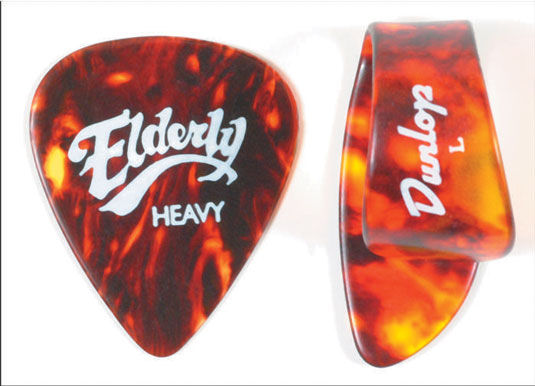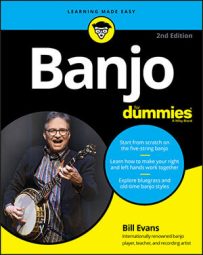You can work up to playing the basic clawhammer strum by first getting comfortable striking individual notes. For the exercises here, use the right-hand index finger for playing melody notes (as indicated with the small letter i underneath each note in the banjo tab). However, the right-hand middle finger is an option preferred by many players. Try playing both ways and do what feels best to you.
Melody-note exercises
Try playing individual notes on the 1st, 2nd, 3rd, and 4th strings with your right-hand index or middle finger (see the tab and listen to the audio track Clawhammer Melody-Note Exercise #1).
As you slowly play these individual notes, focus on your hand position and technique. Are you moving from the wrist? Are you practicing with good economy of motion (no swooping right hand like guitar player Pete Townshend)? Does your finger maintain its bent shape when it meets the string?

As you get more comfortable with this first melody-note exercise, try playing different strings in succession in whatever order comes to mind. This tab (Clawhammer Melody-Note Exercise #2) shows some examples.

Brush exercise
The brush follows the melody note in basic clawhammer banjo technique. In banjo tab, the right-hand indication for the brush is the letter b, found below the corresponding notes in the tab staff.
With the brush, you get to choose which right-hand finger (or fingers) to use and how many strings to strike, but you don't have to decide exactly how you're going to do the brush right now. Just keep trying different combinations and in time, you'll decide upon the way that works best for you.
However, if you aren't sure where to start, first try brushing across the top two or three strings with just the middle finger by itself. Next, add the ring finger, using both fingers to brush across the top strings. Now try the index finger by itself.
Whatever fingers you use, try striking just the 1st string alone for the brush. Then try the top two, top three, and finally all four strings (that is, excluding the 5th string) with any combination of right-hand index and middle fingers. Although the brush is most commonly played across the top two or three strings (all four is uncommon), you need to get used to the feel and sound you get with each brush.
Don't forget to maintain a consistent, bent-finger shape as you hit the strings. Try playing this tab and listen to Clawhammer Brush Exercise.

5th-string exercise
After you have a good feel for the brush, try combining the brush with the 5th string. This time, as you play the brush with a downward motion of either the index or middle fingers, remember to bring the thumb against the 5th string as you complete the brush (as shown in Figure a).
You're now ready to play the 5th string with a downward and sideways motion from the thumb. Don't be afraid to really snap this note with your right-hand thumb, raising the right hand ever so slightly above the strings after the thumb has done its work (see Figure b).

Listen to Clawhammer Brush and 5th-string Exercise and try the exercise in this tab.

Putting it all together: Melody note + brush + 5th string
If you combine the three movements from the preceding sections, you get the basic clawhammer right-hand technique. The first note that you hit is the melody note, played on either the 1st, 2nd, 3rd, or 4th string. This step is followed by the brush and ends with the thumb striking the 5th string. The first note lasts twice as long as the brush and 5th-string notes.

